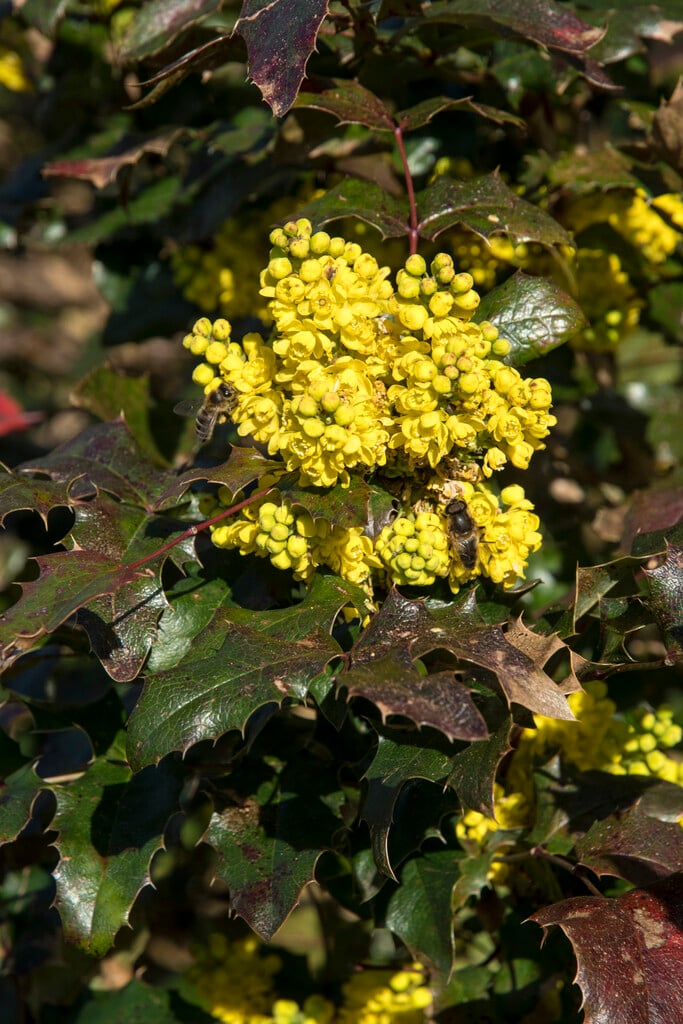Mahonia aquifolium 'Moseri'
An upright, evergreen shrub with oval-shaped prickly green foliage which turns to orange then pinkish-red in autumn. Clusters of yellow, fragrant flowers appear in the spring, followed by white-frosted, blue-black berries

Size
Ultimate height
1–1.5 metresTime to ultimate height
5–10 yearsUltimate spread
1–1.5 metresGrowing conditions
Moisture
Moist but well–drained, Well–drainedpH
Acid, Alkaline, NeutralColour & scent
| Stem | Flower | Foliage | Fruit | |
| Spring | Yellow | Green | ||
|---|---|---|---|---|
| Summer | Green | Blue Black White | ||
| Autumn | Orange Pink Red | |||
| Winter | Orange Pink Red |
Position
- Full sun
- Partial shade
Aspect
East–facing or North–facing or South–facing or West–facing
Exposure
Sheltered Hardiness
H5Botanical details
- Family
- Berberidaceae
- Native to GB / Ireland
- No
- Foliage
- Evergreen
- Habit
- Bushy, Columnar upright
- Potentially harmful
- Berries are ornamental, not to be eaten. Wear gloves and other protective equipment when handling
- Genus
Mahonia are evergreen shrubs with leathery, pinnate leaves which are often spine-toothed, and clustered racemes of sometimes fragrant yellow flowers, sometimes followed by black or purple berries
- Name status
Unresolved
How to grow
Cultivation
Grow in humus-rich moist but well-drained soil, suited to full or partial shade in a sheltered position but tolerant of sun if soil is not too dry. See mahonia cultivation for further information
Propagation
Propagate by semi-ripe cuttings
Suggested planting locations and garden types
- City and courtyard gardens
- Coastal
- Cottage and informal garden
- Wildlife gardens
- Low Maintenance
- Flower borders and beds
Pruning
Pests
Generally pest-free
Diseases
May be susceptible to a rust and powdery mildews
Get involved
The Royal Horticultural Society is the UK’s leading gardening charity. We aim to enrich everyone’s life through plants, and make the UK a greener and more beautiful place.